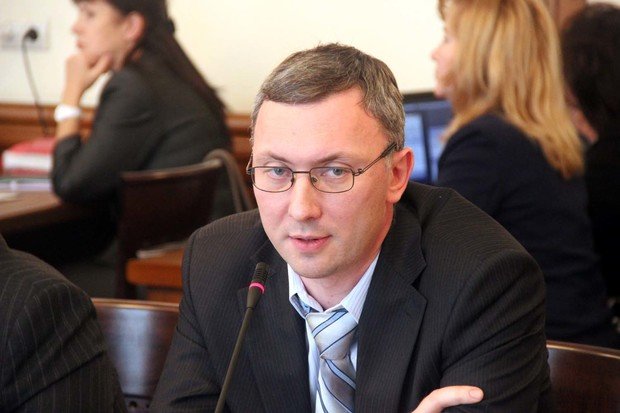Central Bank to renew foreign exchange purchases by budget rule
The regulator chose the best moment for it
A long break in purchases of foreign exchange by the Central Bank of Russia according to the budget rule restrained the ruble rate from falling against the dollar, experts say. As officials of the regulator promised, purchases have renewed. And specialists think a good moment was chosen for it. 257bn rubles in total will be spent on these purposes until 6 February. The series of purchases will become a factor of the weakening ruble, and not the only one. Realnoe Vremya tells the details.
Next stabilisation tool by Central Bank
''New risks appear constantly. In case of shocks linked with capital flights, additional tools supporting the financial stability are needed to stabilise the situation, the fluctuating rate and the budget rule aren't enough,'' Central Bank Chairwoman Elvira Nabiullina said two months ago. ''In Russia, we have a range of such tools: it's automated foreign exchange swaps, auction tools to provide currency to our banks, temporary regulatory concessions for banks. All this gives time and necessary resources for the financial system to adapt. By the way, after the introduction of the new budget rule, the interruption of currency transactions within the rule also became such a tool in Russia.''
The termination of purchasing foreign exchange was announced at the Bank of Russia's session on 14 September last year. At the same time, it was announced the key rate would increase by 0,25 per cent point to 7,5% a year for the first time in four years. Due to growing prices and price expectations, the rate rose again in December, by 0,25 per cent again. The rise was traditionally explained by inflation, rate volatility, external conditions and financial markets' reaction to it.
From a perspective of the impact on the rate, the Central Bank has plenty of tools it can use to compensate FX purchases in the free market by additional oil and gas incomes, including by rising the key rate, says head of RANEPA Institute of Applied Economic Research's Laboratory of Budget Policy Research Ilya Sokolov. The bank applied one of these tools in the autumn when the ruble devaluated, he adds: ''If rubles are sold in the free market for currency as the Ministry of Finance requires, the bank can compensate it – it showed an example when it stopped purchases in the autumn.''
FX purchase was expected to renew in November, but the fall on US stock sites continued at that moment, consequently, sales of risky assets started around the world, including Russian bonds, tells Director of the Analytic Department at Veles-Kapital IC Ivan Manayenko. ''It was an additional risk, this is why the Central Bank postponed purchases. In addition, local demand for foreign exchange traditionally arises by the end of the year. And the market is quite thin, the volume of auctions reduces,'' he notes.

Long-awaited purchases will weaken the ruble
The current moment – the first two months of the year – is the most favourable for the ruble, experts think. ''The first quarter is the most favourable moment according to Russian traditions, the pressure on the ruble in this period is the lowest. In addition, due to the long break in purchases, there is delayed demand for the dollar. Amid the domestic escalation in the USA, we see that now America doesn't have time for new sanctions against Russia. If we put off purchases further on, the postponed demand will just augment,'' Manayenko says. And the reserve balance of the Central Bank, according to him, has changed, dollars have significantly reduced because purchases stopped.
Nevertheless, the break in purchases supported the ruble: it happened because non-residents actively got rid of Russian federal loan bonds in favour of the dollar, Ivan Manayenko goes on: ''There was additional pressure on the ruble. Consequently, the Central Bank decided not to create additional demand for currency and took a step back.''
The break helped to keep the fall in the ruble rate against the dollar, agrees head of Dokhod MC's analytic service Vladimir Kiselyov.
''The currency rate has shown better dynamics than if these interventions took place anyway. It's definitely, the volatility level also shows it. The dollar's growth was caused by falling oil prices, which have fallen by almost 40% since early October. If the Central Bank pursued politics of intervention, we would certainly see the dollar above 70 rubles.''
According to Kiselyov, the series of purchases that began is a factor of the weakening ruble, but not the only. ''It's rather an additional factor compared to, for example, capital flight due to possible sanctions and changes in oil price,'' Kiselyov goes on. ''When oil prices grow, additional purchases of the Central Bank restrain the ruble from becoming stronger. If the ruble falls due to some factors, they can serve a factor to accelerate this fall. That's to say the Central Bank's purchases don't set the trend, but they can accelerate or slow down it.''
''There are negative moments for citizens, but the budget rule has other tasks''
''A rule that the ruble is to be fixed by oil price at $45 was introduced in the budget several years ago. So when oil price grows, the Russian economy doesn't get the full effect, but thus reducing its dependence on oil prices. This is why it's needed,'' Kiselyov notes. With the introduction of the new budget rule in 2018 where incomes from oil export to purchase currency over $40, some experts started to talk about the negative impact on the real income of the population. ''There were many talks that we finance the US economy. But there is a moment here: oil markets are quite volatile, the Russian economy is anyway very sensitive to changes in oil prices. This is why there is sense in leaving this mark at the level of $40 and create an accumulated reserve. The level of $45-40 to meet the budget rule doesn't matter, effective use of money is the point,'' Ivan Manayenko.
This rule in itself reduces the dependence of the ruble rate on oil. Another moment is that the ruble didn't manage to remain strong with oil growing to $80 because of the new budget rule, Manayenko adds.
 But ''from the point of view of the Russian budget, the current situation is even more favourable,'' the expert continues. ''Yes, probably there are negative moments for citizens and their purchasing power. But the budget rule has a bit different tasks: to make the economy more prepared for external shocks.''
But ''from the point of view of the Russian budget, the current situation is even more favourable,'' the expert continues. ''Yes, probably there are negative moments for citizens and their purchasing power. But the budget rule has a bit different tasks: to make the economy more prepared for external shocks.''
In Ilya Sokolov's opinion, it was told about the $40 because of the availability/unavailability of money to hold structural reforms: ''Will the money indicated in the budget as incomes from $40 per barrel be enough to meet all requirements of the May Decree?
At the moment, by estimates made in the budget, this money is enough. On the other hand, big money, a higher price, a softer budget rule helped not to postpone all these reforms. Structural transformations in the 2019-2021s could be financed at a more forced pace.''